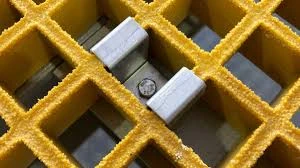
-
 Afrikaans
Afrikaans -
 Albanian
Albanian -
 Amharic
Amharic -
 Arabic
Arabic -
 Armenian
Armenian -
 Azerbaijani
Azerbaijani -
 Basque
Basque -
 Belarusian
Belarusian -
 Bengali
Bengali -
 Bosnian
Bosnian -
 Bulgarian
Bulgarian -
 Catalan
Catalan -
 Cebuano
Cebuano -
 China
China -
 China (Taiwan)
China (Taiwan) -
 Corsican
Corsican -
 Croatian
Croatian -
 Czech
Czech -
 Danish
Danish -
 Dutch
Dutch -
 English
English -
 Esperanto
Esperanto -
 Estonian
Estonian -
 Finnish
Finnish -
 French
French -
 Frisian
Frisian -
 Galician
Galician -
 Georgian
Georgian -
 German
German -
 Greek
Greek -
 Gujarati
Gujarati -
 Haitian Creole
Haitian Creole -
 hausa
hausa -
 hawaiian
hawaiian -
 Hebrew
Hebrew -
 Hindi
Hindi -
 Miao
Miao -
 Hungarian
Hungarian -
 Icelandic
Icelandic -
 igbo
igbo -
 Indonesian
Indonesian -
 irish
irish -
 Italian
Italian -
 Japanese
Japanese -
 Javanese
Javanese -
 Kannada
Kannada -
 kazakh
kazakh -
 Khmer
Khmer -
 Rwandese
Rwandese -
 Korean
Korean -
 Kurdish
Kurdish -
 Kyrgyz
Kyrgyz -
 Lao
Lao -
 Latin
Latin -
 Latvian
Latvian -
 Lithuanian
Lithuanian -
 Luxembourgish
Luxembourgish -
 Macedonian
Macedonian -
 Malgashi
Malgashi -
 Malay
Malay -
 Malayalam
Malayalam -
 Maltese
Maltese -
 Maori
Maori -
 Marathi
Marathi -
 Mongolian
Mongolian -
 Myanmar
Myanmar -
 Nepali
Nepali -
 Norwegian
Norwegian -
 Norwegian
Norwegian -
 Occitan
Occitan -
 Pashto
Pashto -
 Persian
Persian -
 Polish
Polish -
 Portuguese
Portuguese -
 Punjabi
Punjabi -
 Romanian
Romanian -
 Russian
Russian -
 Samoan
Samoan -
 Scottish Gaelic
Scottish Gaelic -
 Serbian
Serbian -
 Sesotho
Sesotho -
 Shona
Shona -
 Sindhi
Sindhi -
 Sinhala
Sinhala -
 Slovak
Slovak -
 Slovenian
Slovenian -
 Somali
Somali -
 Spanish
Spanish -
 Sundanese
Sundanese -
 Swahili
Swahili -
 Swedish
Swedish -
 Tagalog
Tagalog -
 Tajik
Tajik -
 Tamil
Tamil -
 Tatar
Tatar -
 Telugu
Telugu -
 Thai
Thai -
 Turkish
Turkish -
 Turkmen
Turkmen -
 Ukrainian
Ukrainian -
 Urdu
Urdu -
 Uighur
Uighur -
 Uzbek
Uzbek -
 Vietnamese
Vietnamese -
 Welsh
Welsh -
 Bantu
Bantu -
 Yiddish
Yiddish -
 Yoruba
Yoruba -
 Zulu
Zulu
cpvc and frp pipes combine durability and resistance.
Combining Durability and Resistance The Advantages of CPVC and FRP Pipes
In the modern world of construction and plumbing, the selection of materials is crucial to ensure the longevity and durability of systems
. Among the various options available, CPVC (Chlorinated Polyvinyl Chloride) and FRP (Fiberglass Reinforced Plastic) pipes stand out as exemplary choices, thanks to their unique properties that combine exceptional durability and impressive resistance to various environmental factors.CPVC pipes are known for their impressive temperature resistance, allowing them to handle high-temperature water and chemicals without degradation. Unlike traditional PVC, which can warp and weaken under heat, CPVC is chlorinated, providing enhanced thermal stability. This makes CPVC an ideal choice for hot water distribution systems, industrial applications, and chemical processing. Furthermore, CPVC is resistant to corrosion, a common issue for metal pipes that can lead to leaks and expensive repairs over time. When used in environments with aggressive fluids or salty conditions, CPVC maintains its integrity, ensuring a longer lifespan and reliability.
On the other hand, FRP pipes bring a wealth of benefits to the table, particularly in terms of strength-to-weight ratio. Made from a matrix of fiberglass and resin, FRP pipes are lightweight yet incredibly strong, allowing for easier handling and installation. This material is particularly beneficial in industrial applications where heavy-duty systems are required but weight restrictions must be adhered to. Moreover, FRP pipes offer excellent resistance to a variety of chemicals, including acids, alkalis, and solvents, making them suitable for industries such as chemical manufacturing and wastewater treatment.
cpvc and frp pipes combine durability and resistance.

The combining of CPVC and FRP pipes in various applications offers a synergistic effect where the unique strengths of each material can be leveraged. For instance, in a plumbing system that requires both hot water lines and chemical drainage, using CPVC for the hot water distribution ensures durability against high temperatures, while FRP can be utilized for the drainage of corrosive substances, thus providing full-spectrum protection against failure or leakage.
Moreover, the installation of CPVC and FRP pipes can lead to significant cost savings over time. Due to their long life span, reduced maintenance requirements, and resistance to corrosion and chemical damage, these materials can lower the total cost of ownership in both residential and industrial settings. Additionally, their lightweight nature reduces the burden on structural supports, which can result in lowered construction and support costs.
In summary, the combination of CPVC and FRP pipes presents a robust solution for modern piping needs. Their unique properties not only ensure durability and resistance to a wide array of environmental challenges but also contribute to overall system efficiency and cost-effectiveness. As industries continue to evolve and demand materials that can withstand extreme conditions while minimizing maintenance needs, the use of CPVC and FRP pipes will undoubtedly become more prevalent. This combination offers a future-forward approach to piping solutions, paving the way for safer and more reliable infrastructure across the globe.









